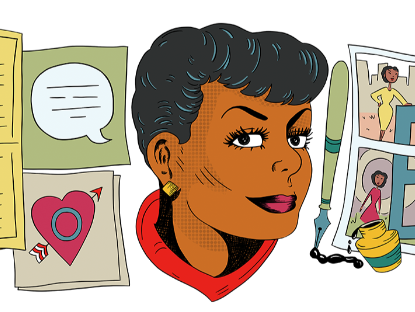Jackie Ormes: Who was the black activist being celebrated by US Google Doodle?
Google honours first black female newspaper cartoonist, 75 years on since drawings first published

Your support helps us to tell the story
From reproductive rights to climate change to Big Tech, The Independent is on the ground when the story is developing. Whether it's investigating the financials of Elon Musk's pro-Trump PAC or producing our latest documentary, 'The A Word', which shines a light on the American women fighting for reproductive rights, we know how important it is to parse out the facts from the messaging.
At such a critical moment in US history, we need reporters on the ground. Your donation allows us to keep sending journalists to speak to both sides of the story.
The Independent is trusted by Americans across the entire political spectrum. And unlike many other quality news outlets, we choose not to lock Americans out of our reporting and analysis with paywalls. We believe quality journalism should be available to everyone, paid for by those who can afford it.
Your support makes all the difference.Jackie Ormes, the illustrator and activist who challenged how black women were portrayed with popular cartoons, has been celebrated in a Google Doodle.
The drawing, which is visible throughout the United States on Tuesday, celebrates Ms Ormes’ work with an interactive cartoon depicting her career and activism.
As the first and only Black female newspaper cartoonist of her time in the United States, Ms Ormes’ engaged readers with a single panel comic strip starring characters who dealt with the struggles of everyday life.
They included Ginger and her 6-year-old sister Patty-Jo, who were the main characters in the groundbreaking “Patty-Jo ’n’ Ginger” cartoon that debuted in the Pittsburgh Courier for the first time on 1 September 1945.
Ms Ormes started working with the Courier, a newspaper serving the city’s black community, soon after she graduated from high school, where she was said to have taught herself how to draw.
Her first cartoon titled “Torchy Brown in Dixie to Harlem” was published in 1937 when she was 26-years-old.
As with all of her work, Ms Ormes used that comic strip to depict the stories of people who migrated from the South to the North to escape racism and seek other opportunities in the mid-20th Century.
The illustrator’s black heroines, as depicted in the Google Doodle, also often dealt with issues such environmental justice and gender inequality.
As Google described these cartoons, “Her characters were all independent women—confident, intelligent, attractive, and brave, who persevered against adversity to reach their next adventure.”
The anniversary of Ms Ormes’ Patty Jo comic strip comes as issues of racial inequality once again receive widespread attention in the wake of police actions towards America’s black community.
The cartoonist, who retired in 1956, was posthumously inducted into the National Association of Black Journalists’ Hall of Fame in 2014, following a long career dedicated to fighting against the injustices faced by black women.
Join our commenting forum
Join thought-provoking conversations, follow other Independent readers and see their replies
Comments